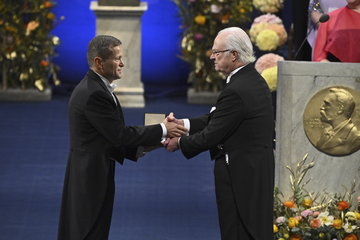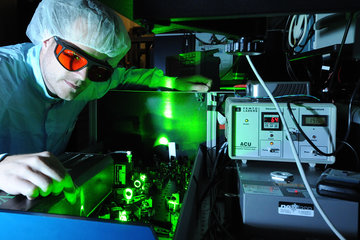An event with political impact – at least in Spain

Do you know Oviedo? The capital of Asturias is not one of the 'hot spots ' for travellers in Spain, although it has a few UNESCO World Cultural Heritage monuments. But once a year, in October, international attention is focused on Oviedo – when the Prince of Asturias Awards are presented by the Spanish Crown Prince. Since 1981, the Foundation has conferred a total of eight awards each worth 50,000 euros in the categories of arts, communication, humanities, literature, social sciences, science and technology, sports, international cooperation, and concord. The award ceremony attracts world-renowned personalities to the city, such as Norman Foster, Ricardo Muti, Bob Dylan, Arthur Miller, Doris Lessing, Václav Havel, just to name a few. In 2002, Woody Allen was one of the prize winners. Six years later, he made the city the location of his film Vicky Cristina Barcelona. "It's as if it does not belong to this world, as if it could not possibly exist - Oviedo is like a fairy tale ," said the New Yorker in its review.
Only those who have witnessed it once can really appreciate the atmosphere of Oviedo in October. Getting to Oviedo is quite complicated: There are no direct flights; you can only get there via stopover in Barcelona or Madrid. Outside the entrance of the venerable Hotel de La Reconquista - the building dates from the 18th Century - a “red” carpet is rolled out for the winners. In this case, the red carpet is actually blue, the colour of the Prince of Asturias Foundation. The Director of the Foundation welcomes each prize-winner in person, to the sounds of traditional bagpipe music. The reception is followed by a press conference.

It is rare that a Max Planck President has experienced such a flurry of photographers’ flashlights - and with him the four young researchers Ali Shamoradi, Soojin Ryu, Damian Refojo and Matthias Weißenbacher who accompanied the President on his journey as representatives for the approx. 400 junior scientists within the Max Planck Society.
The press conference, in which the President called for more political commitment to research, lasted about 20 minutes. In numerous letters, Spanish colleagues had asked Peter Gruss to champion basic research during his visit. "La Max Planck dedicará el premio a enlazar con Investigadores espanoles" was the headline of the local newspaper LA NUEVA ESPAÑA on the following day, emphasising the Max Planck Society’s dedication to fostering young researchers. The Max Planck Society has doubled the prize money from their own resources to provide young Spanish young scientists with the opportunity to spend a research residency at a Max Planck Institute. The roundtable discussion, which took place in the evening in Gijon with the CEO of ThyssenKrupp Elevator, Ramón Sotomayor, also focused on the next generation of scientists, in the light of the alarmingly high youth unemployment in Spain. The discussions were held in the buildings of the University of Oviedo, which was founded in Spain 1608 and is thus the third oldest university in Spain. Currently with 30,000 students, it is the scientific and cultural centre of Asturias. Under the headline "En defensa del talento", the Spanish regional newspaper El Comercio quoted Peter Gruss’s statement that Spain should keep its talents in the country.

In any case, the media coverage surrounding the award ceremony was huge. The local newspapers printed extensive supplements, in which they reported in detail on the individual winners of this year, including the U.S. star photographer Annie Leibovitz, Oscar-winning Austrian filmmaker Michael Haneke and Nobel Prize winner Peter Higgs and Francois Englert scored. TV crews besieged the hotel. Pictures of the winners were displayed throughout the city, and highlights of past awards were shown on public screens. The Max Planck "Images of Science" exhibition was prominently displayed alongside the path through the city’s park - everyone making their way from the Hotel de la Reconquista Teatro Campoamor to the award ceremony, walked past it. Thousands of people lined the streets to watch the motorcade of the Queen of Spain, the Crown Prince and the Crown Princess as well as the winners, making their way to the Teatro Campoamor.

Peter Gruss and four young Max Planck scientists accept the certificate from the Spanish Crown Prince.
The actual award ceremony made it on the front page of the Saturday edition of El País. And by that time, at the latest, it became clear why the Prince of Asturias Award is also called the “Spanish Nobel Prize”. The ceremony is as impressive as that presided over by the Swedish Royal Family during the Nobel Prizes. In his speech, the Prince appealed to his countrymen to “engage in join efforts" and "self-sacrifice". Addressing nearly 2,000 guests, the Prince explained that Spain "was a great nation", worth "living, loving and fighting for.” As its front page image, the newspaper El Comercio chose the photograph of the three representatives of the Spanish organization for the blind, ONCE. The organization received the prize in the category “Concord” because it has been working for the social integration of disabled individuals for three quarters of century, enhancing the dignity and quality of the life of millions of people in Spain.
CB















